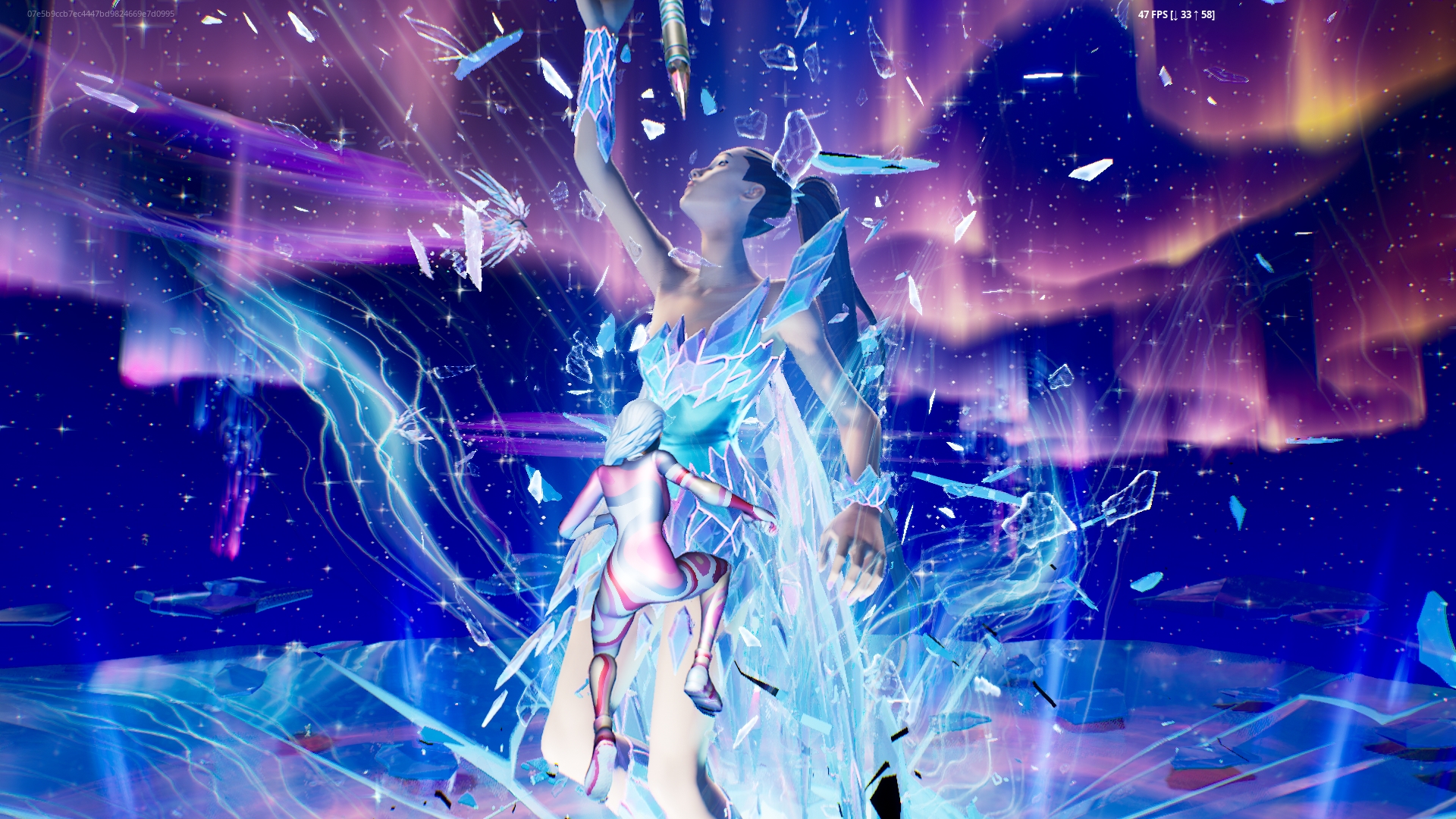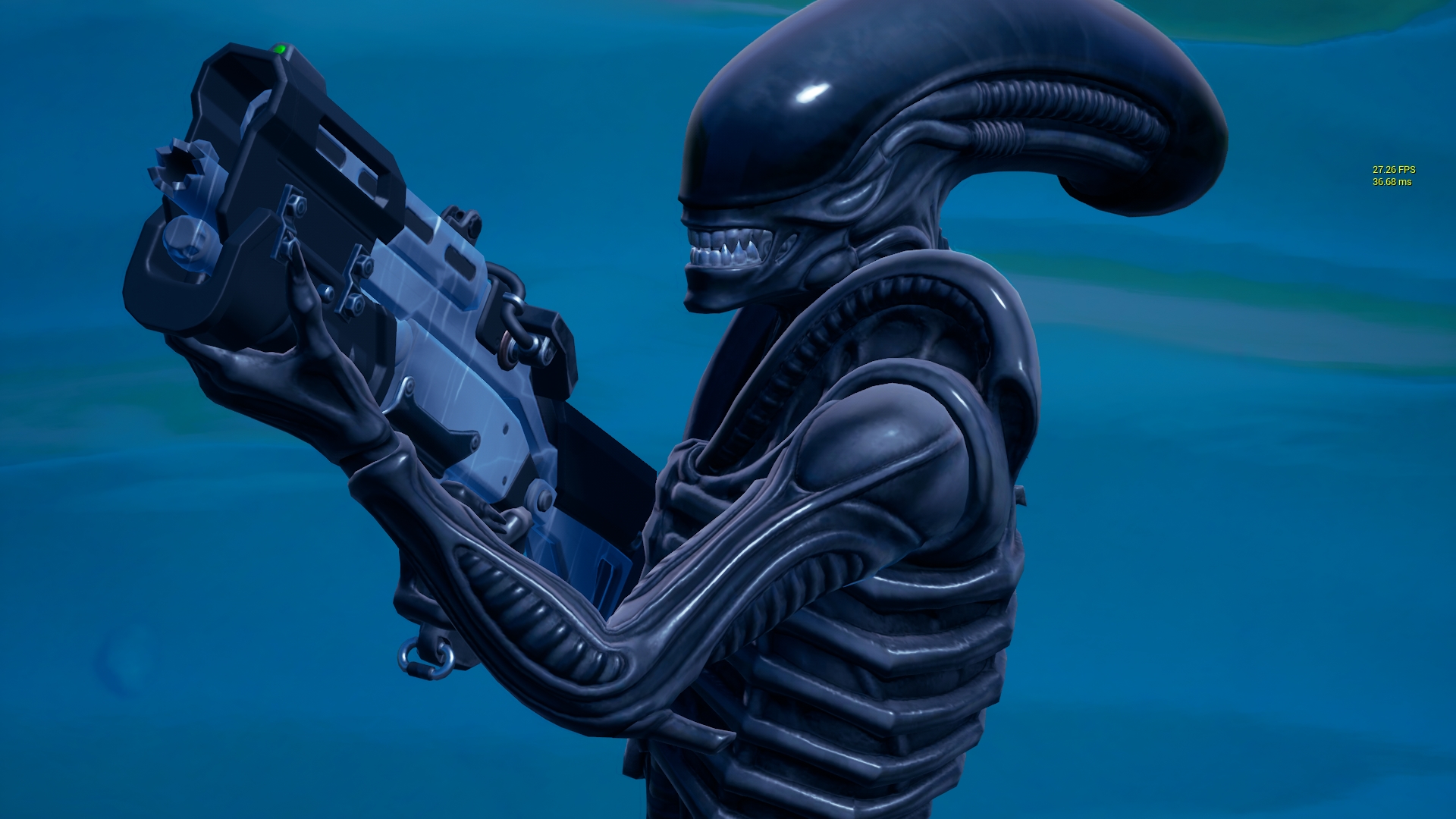Sponsored by GameCamp.GG
It’s a tense moment on the Island. Tucked away within an office building Batman, John Wick, and Lara Croft eye each other nervously, each wishing they’d scored a Chug Splash to share. On the street below, the Xenomorph nods to LeBron James and Iron Man as the trio ignite their lightsabers. Somewhere off in the distance the faint sounds of ‘Gangnam Style’ waft over the rooftops …
Just a few years ago the above would have sounded like the ravings of a madman, but it’s actually a pretty typical match of Fortnite. Over the years, Epic’s Battle Royale juggernaut has become notorious for the colossal amount of IPs featured in the game, including some of the biggest names in entertainment on the planet.
The list is endless, though we’ve seen skins, items, and additions to the map from Star Wars, Marvel, DC, the NFL, League of Legends, and The Walking Dead. Beyond that are eye-catching time-limited events, like the NBA celebrating their 75th anniversary with a basketball-themed hub world stuffed with minigames, in-game screenings of Inception and The Dark Knight, and extravagant in-game concerts from the likes of Ariana Grande and Travis Scott.

So, how does all this work? Well, the most straightforward answer is that Epic Games can offer IP holders an extremely attractive quid pro quo. Every month, Fortnite has about 270 million active players, with more than half in the crucial 18-24 demographic. Getting their eyeballs on what companies are selling is invaluable, making Fortnite one of the most valuable pieces of marketing real estate in the world.
This allows Epic Games to bend the rules on how they depict characters. For example, nowhere else will Superman rub shoulders with Spider-Man. This can be something of a double-edged sword, as eyebrows were raised at the sight of the famously gun- and murder-averse Batman blowing people away with a shotgun. Then there was the questionable tribute to Martin Luther King, Jr., at which you could watch his famous “I have a dream” address while trying not to get distracted by armies of Rick Sanchez clones spamming emotes.

At this point, you’d be forgiven for wondering whether Epic Games pays companies to license their characters or vice versa. Exact details are a closely guarded corporate secret and likely vary per licensing deal, so some companies likely take a percentage of each licensed skin sold while others accept a flat fee for inclusion in the game. Similar deals will be in place for events, though we suspect explicit in-game marketing like the Star Wars: The Rise of Skywalker exclusive footage reveal involves money being paid to Epic for access to their audience.
We got a rare peek at the inner workings of Fortnite’s financial machine during last year’s legal battle between Epic Games and Apple. The disclosure process saw several confidential corporate documents released to the public, including a Powerpoint presentation setting out just how profitable Epic’s collaborations are. For example, during the NFL event players purchased 3.3 million branded skins, with each selling for 1500 V-Bucks each (around $15). That adds up to approximately $50 million in revenue for a single set of skins.
The presentation also showcased the highest-earning collaborations. The NFL was in third, Star Wars was second, and Marvel was number one. While the bar chart didn’t give exact numbers, the size of the bars indicates that Star Wars made around $55 million and Marvel around $75 million (in total, Fortnite generates roughly $4-5 billion each year).
Few companies are able to leave much potential revenue on the table when Fortnite comes knocking, with one of the few apparent exceptions Nintendo rebuffing Epic’s attempts to license a Samus Aran skin for their ‘Gaming Legends’ series.

One more wrinkle in the tale is that Epic Games and the Walt Disney Corporation have a very cozy business relationship. In 2017, Epic was selected for the ‘Disney Accelerator’ program, designed to (as per Epic’s press release):
“Connect Disney portfolio companies with the creativity, imagination, and expertise of The Walt Disney Company by giving participants unprecedented access to Disney’s leadership team, mentorship, and support.”
In addition, Disney is a minority shareholder in Epic and the two companies are now bound together in many more ways than Fortnite. For example, Epic’s Unreal Engine is used for the newest rides in Disney’s parks and is used extensively in film and TV production as part of ‘The Volume’ real-time CGI backdrop. This likely means that if Epic or Disney wants a specific skin from their Mouse House’s gigantic IP collection in the game, all they need do is ask.
But can the good times last forever? Fortnite‘s collaborations may not be slowing down (Scarlet Witch and RoboCop have just climbed into the Battle Bus) but their player base is. Being kicked off Apple’s app store in August 2020 saw an overnight drop of 73 million players and each month that passes sees a continued decline.

Things aren’t catastrophic — we’re talking a drop of a million players a month against a 270 million total — but numbers trending down ain’t great. Perhaps some of that’s down to a leveling off of the big spike in players during the COVID-19 lockdowns when many children were stuck at home with little else to do other than crank 90s. However, it’s telling that my source close to the ground on this (i.e. my ten-year-old nephew Rhys) doesn’t hesitate to declare Fortnite “a dead game.”
Fortnite may also soon find itself in competition as a ‘social platform’ with Meta’s Metaverse, and there will always be another major multiplayer game snapping at its heels. So far Fortnite has seen off pretenders like Remedy’s Apex Legends, but someday its crown will inevitably fall.
Until then the party isn’t stopping over at Epic Games, with Fortnite apparently destined to swallow the majority of the world’s most popular characters. Now, when do we get that damn Peter Griffin skin they keep teasing?

